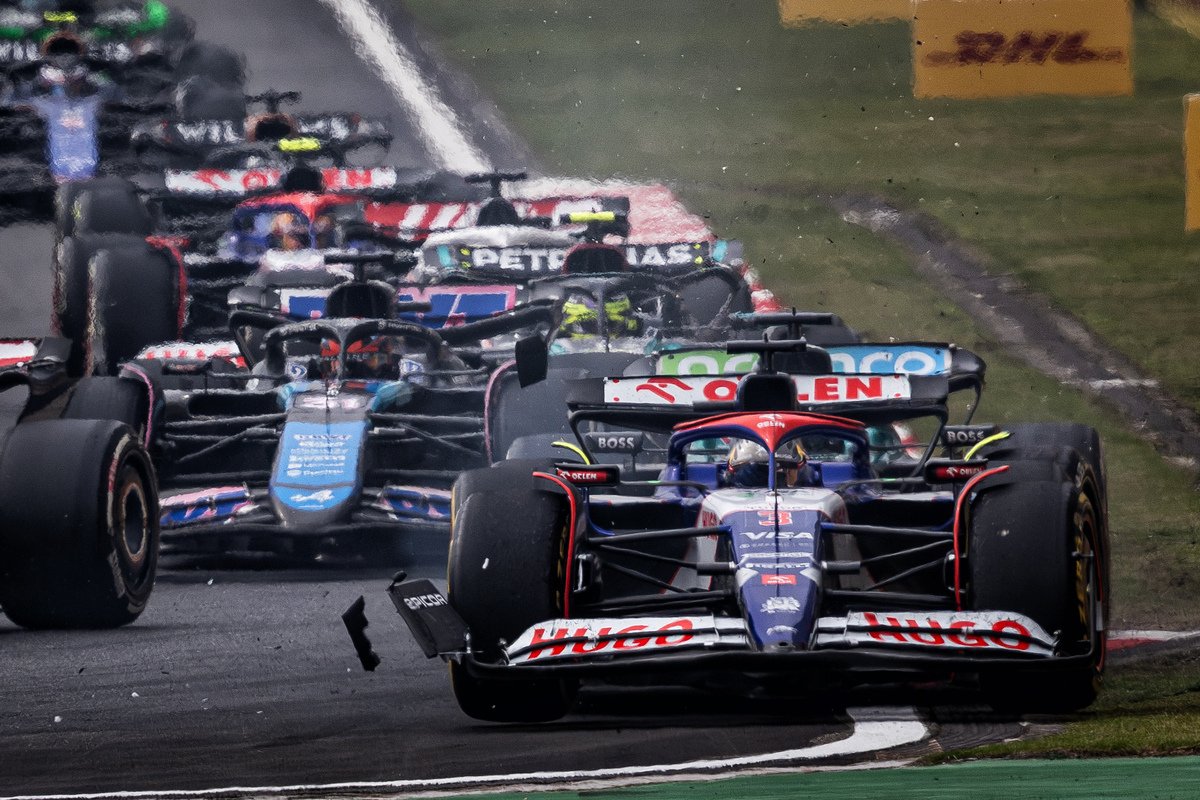

Accidents happen in motorsport but there were two factors that made the Stroll clash especially hard to swallow.
The first was that it happened under the Safety Car when a driver’s sole job is to watch the car in front and, if at all possible, not hit it. Stroll failed that task spectacularly.
The second was the Canadian’s abject refusal to accept culpability for a crash that should never have happened.
There were seemingly only two people who believed the crash was not Stroll’s fault, and both were green. Everyone else saw through the drivel.
Officials penalised Stroll and noted he should have been more aware of what was happening, a point Ricciardo himself made.
Oscar Piastri, another innocent victim of the Stroll cannonball, also laid the blame squarely at the feet of the Canadian, noting that the field did indeed bunch up, but nobody else attempted to dive underneath – literally – the car in front.
Stroll even played the victim over the team radio.
“This idiot just slammed on the brake. Check wing damage,” he complained.
Had he, upon reflection post-race, accepted that the incident was entirely his doing, it wouldn’t have been an issue.
Mistakes and incidents happen. It is not ideal but that’s racing.
Instead, he doubled down. The only concession being to deny saying his ‘idiot’ comment referred to Ricciardo specifically and was a nebulous comment.
“I’d slowly started to calm down and then I was told what Lance thinks of the incident,” Ricciardo said.
“And apparently, I’m an idiot and it was my fault.
“So, that made my blood boil because it’s clear as day… and it’s also behind a Safety Car.
“The only thing you’ve got to do is watch the car in front. We can’t predict what the leader is going to do. We can’t assume that we’re going to go in Turn 14. The race doesn’t start until the control line.
“I’m doing my best not to say what I want to say, but f**k that guy. And I’m being nice still.
“But if that’s what he thinks, I’m like… yeah.”
Naturally, Stroll, the son of Aston Martin’s billionaire owner, enjoyed the full support of its team principal, Mike Krack.
“I think it was a chain reaction in the end of the day,” he argued.
“You saw Fernando [Alonso] locking and another car behind, and I think everybody was a little caught out.
“I think it started further to the front and I would have liked that this would have been looked at in a little bit more detail the way we tried to discuss it.
“But the verdict was very quickly that Lance was to blame and he got a 10-second penalty.
“I thought it was very, very fast and very harsh,” he concluded of the decision.
Describing a 10-second penalty for an incident that eliminated one car and heavily compromised another is as frivolous as it is one-eyed.
That incident to one side, the reason and sequences in which the Safety Car was called must be examined closely by the FIA.
Valtteri Bottas rolled to a halt in the run-off at Turn 11 with a terminally ill Ferrari power unit in the back of his Sauber.
Initially covered under yellow flags, the Safety Car wasn’t deployed until after Bottas had climbed from the car – in the firing line or cars having incidents at that corner.
The Virtual Safety Car was shown but it was only when the car proved especially troublesome to clear (it was stuck in gear) that the Safety Car was deployed.
The delay in making that decision warrants further investigation and explanation from race control and the FIA. Perhaps there was a very sound reason for it, but that has not been communicated and instead television audiences saw a driver climbing out of a car as others approached.
Under that interruption, RB missed a trick with Ricciardo that, had he remained in the race, would have proved costly.
While the bulk of the field pitted under either the Virtual Safety Car or subsequent full Safety Car, Ricciardo remained on track on the same set of medium tyres he’d swapped onto on Lap 14.
There was a set of hard compound tyres at his disposal but RB did not haul him in and bolt them on.
As a result, had he remained in the race, he’d have quickly fallen from ninth at the restart as those on fresher rubber behind breezed by.
Worse, with a pit stop still to come, he was effectively another 24 seconds further back.
That combination of factors, without additional interruption, would have seen him end the race well down the order.
Where RB looked to have made a strategic blunder, McLaren and Ferrari played it perfectly after they got fortunate with the timing of the Virtual Safety Car with Charles Leclerc and Lando Norris.
Second-placed Sergio Perez had pitted on Lap 13, dropping to fourth on road behind Norris and Leclerc into fourth.
The Mexican had not cleared either by the time the Virtual Safety Car was deployed.
By not stopping earlier, Leclerc and Norris gained track position and maintained it, Norris holding second to the chequered flag in what was a fine performance in a car that should, by rights, have been no higher than third.
It’s a performance that will give McLaren headaches, though, as it simply wasn’t expected.
The team headed to China expecting to struggle, but instead, Norris landed pole for the F1 Sprint and picked up a fine podium in the grand prix. A top three in the Sprint was probably also on offer had he ceded first to Lewis Hamilton at the opening corner.
But why was McLaren so fast? Why was it more competitive in China than it was in Suzuka, a venue it expected it would do well at? They’re important questions as they point to a fundamental understanding of the car’s strengths.
A well-formed view of those dictates how aggressive or how much risk one can take in challenging for wins.
It also shapes car development and, with resources restricted as they now are under the cost cap, that is critical to the long-term competitiveness of the team.
So, while there will be celebrations in Woking, there will be a significant amount of head-scratching ahead of the circus touching down in Miami.





















Discussion about this post